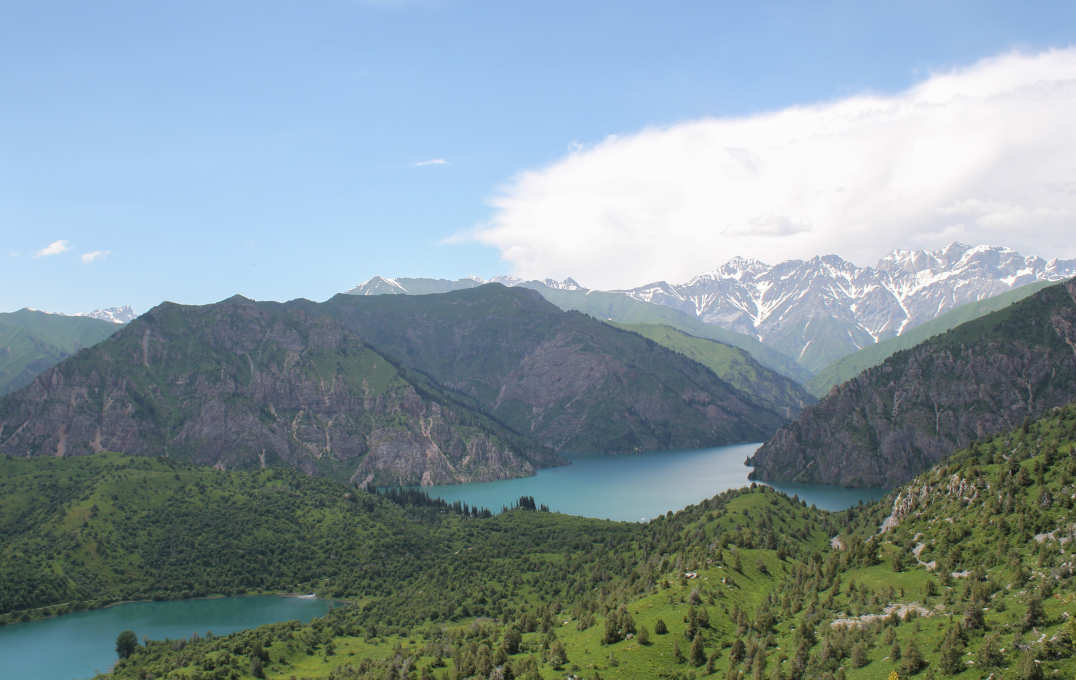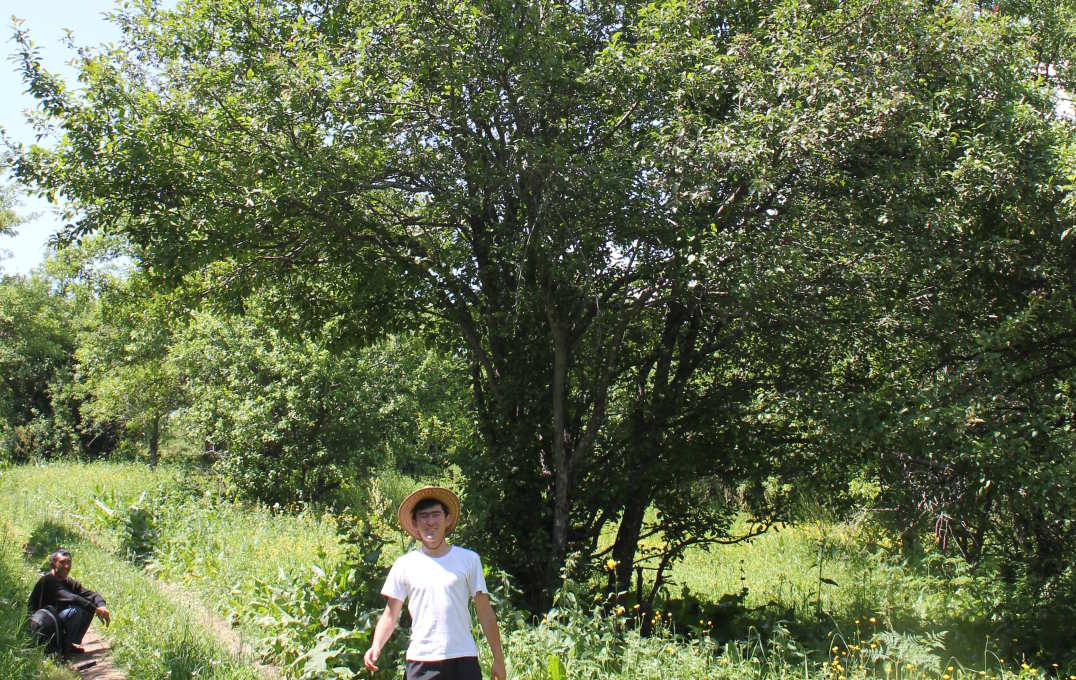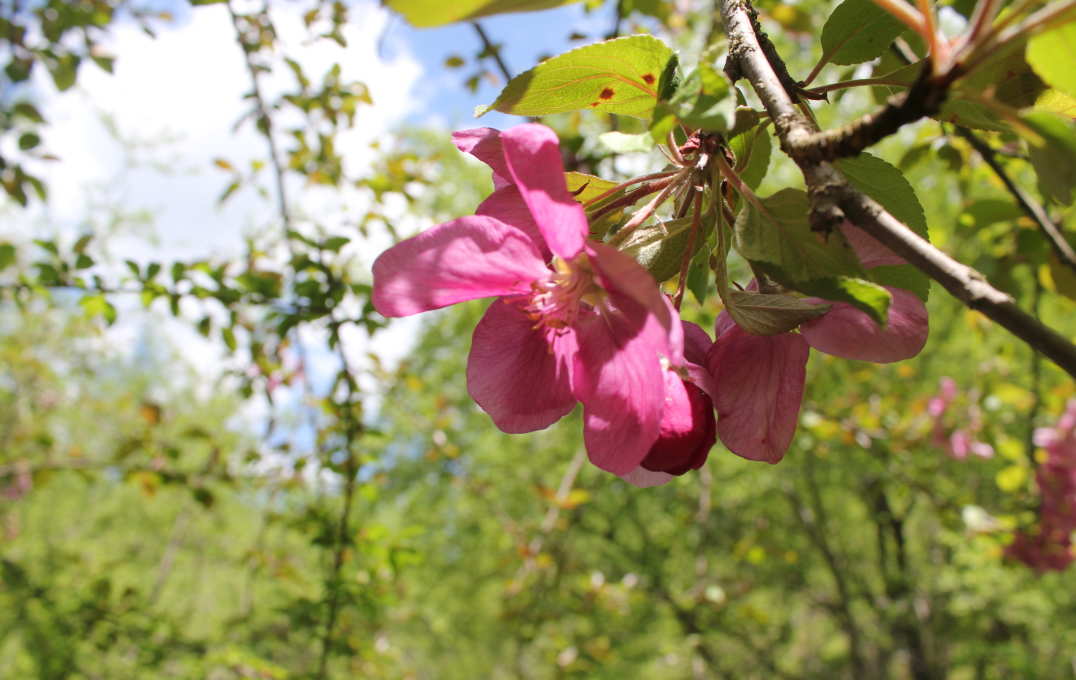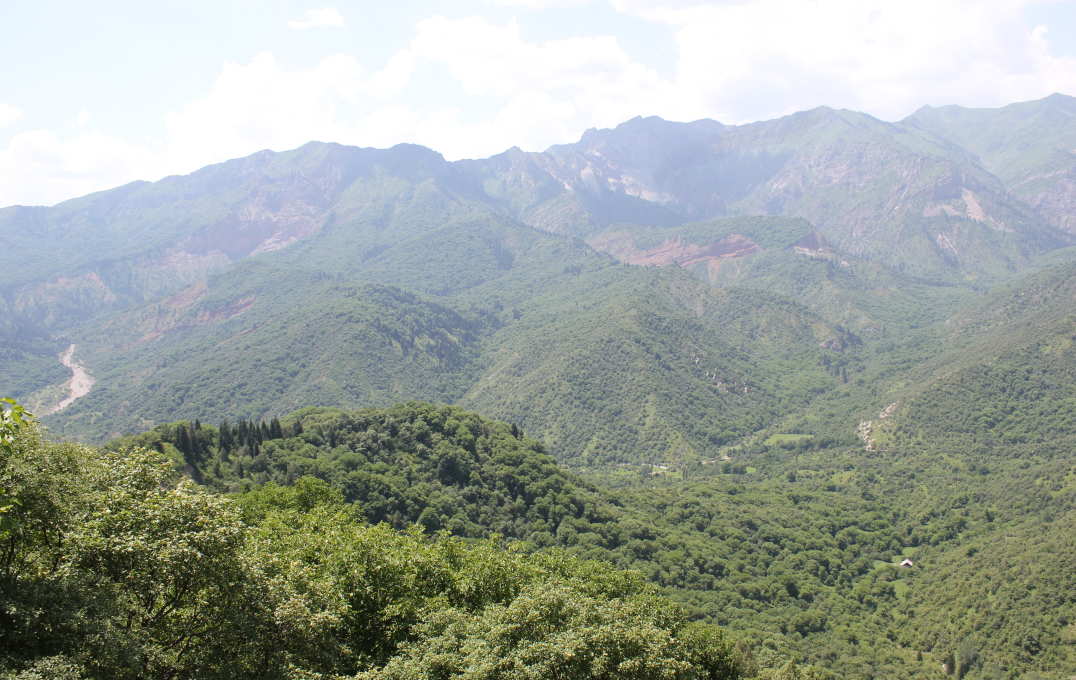Only 149 trees of a wild apple species found alive
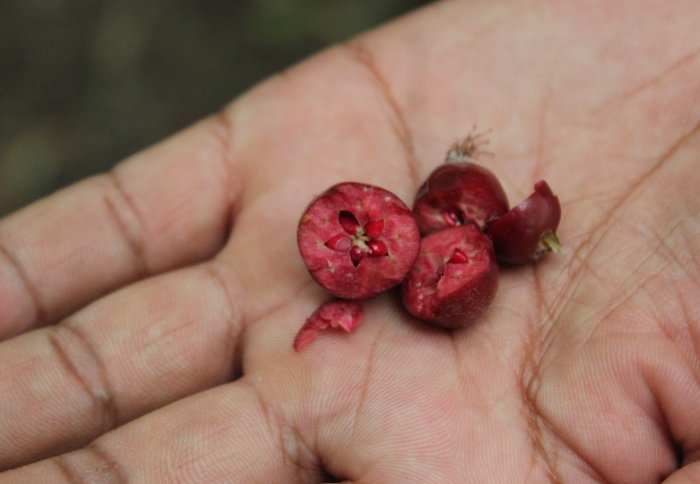
Niedzwetzky’s apple, a relative of the ancestor of supermarket varieties, faces extinction as less than 150 trees have been found in its native land.
Niedzwetzky’s apple (Malus niedzwetzkyana) shares its home in Central Asia with the iconic snow leopard, but a new study shows the tree is far more endangered than the big cat, and faces extinction if immediate action is not taken.
Only five to ten percent of the original forest area that contains Niedzwetzky’s apple remains, and this is heavily threatened by livestock grazing and local firewood collection. Brett Wilson
The apple is native to the foothills of the Tian-Shan mountain range in Central Asia, with the largest remaining populations in Kyrgyzstan. However, when Imperial College London researcher Brett Wilson trekked the hills in search of mature trees, he only found 149 surviving individuals.
In a paper published today in the journal Oryx, alongside his collaborators from Kew Gardens and Fauna & Flora International, Brett calls the conservation of the species and its native forest ecosystem “critical and urgent”.
He said: “Only five to ten percent of the original forest area that contains Niedzwetzky’s apple remains, and this is heavily threatened by livestock grazing and local firewood collection.
“Some populations of the tree are also ageing, and without new young trees to take their place and add genetic diversity, these populations will soon collapse.”
An apple a day
The tree is part of the native walnut-fruit forests that were abundant until rapid deforestation began about 50 years ago. The forests provide local resources, such as firewood, and also prevent soil erosion and cleanse the water.
The apples also contain abundant pigments with potentially desirable properties. Anthocyanin pigments give the blossom of Niedzwetzky’s apple a distinctive pink colour, which also colours the fruit’s skin and flesh. Anthocyanins are antioxidant compounds, which some studies have suggested may also have anti-cancer and anti-inflammatory properties.
Niedzwetzky’s apple is a close, but rarer, relative of Malus sieversii, which is thought to be the ancestor of most domesticated apples. This means some of the useful properties of Niedzwetzky’s apples could be more easily added to domesticated apples, making them a valuable genetic resource.
Encouraging young trees
With so few trees remaining, Brett also collected data on how they could be conserved and their population restored. Of the trees he found, most lived on southwest-facing slopes with relatively open canopy cover, suggesting similar sites would be best for planting new trees.
These efforts, he said, should be focussed on those areas of remaining forest in reserves, where threats from firewood collection and grazing of young trees are minimal as the sites are well protected.
However, not all reserves are well managed and substantial damage to the forests still occurs, so some local interventions may still be needed, such as livestock fencing, to give young trees a chance to take hold.
-
‘The future of walnut–fruit forests in Kyrgyzstan and the status of the iconic Endangered apple Malus niedzwetzkyana’ by Brett Wilson, Morena Mills, Maksim Kulikov and Colin Clubbe is published in Oryx.
Article text (excluding photos or graphics) © Imperial College London.
Photos and graphics subject to third party copyright used with permission or © Imperial College London.
Reporter
Hayley Dunning
Communications Division
